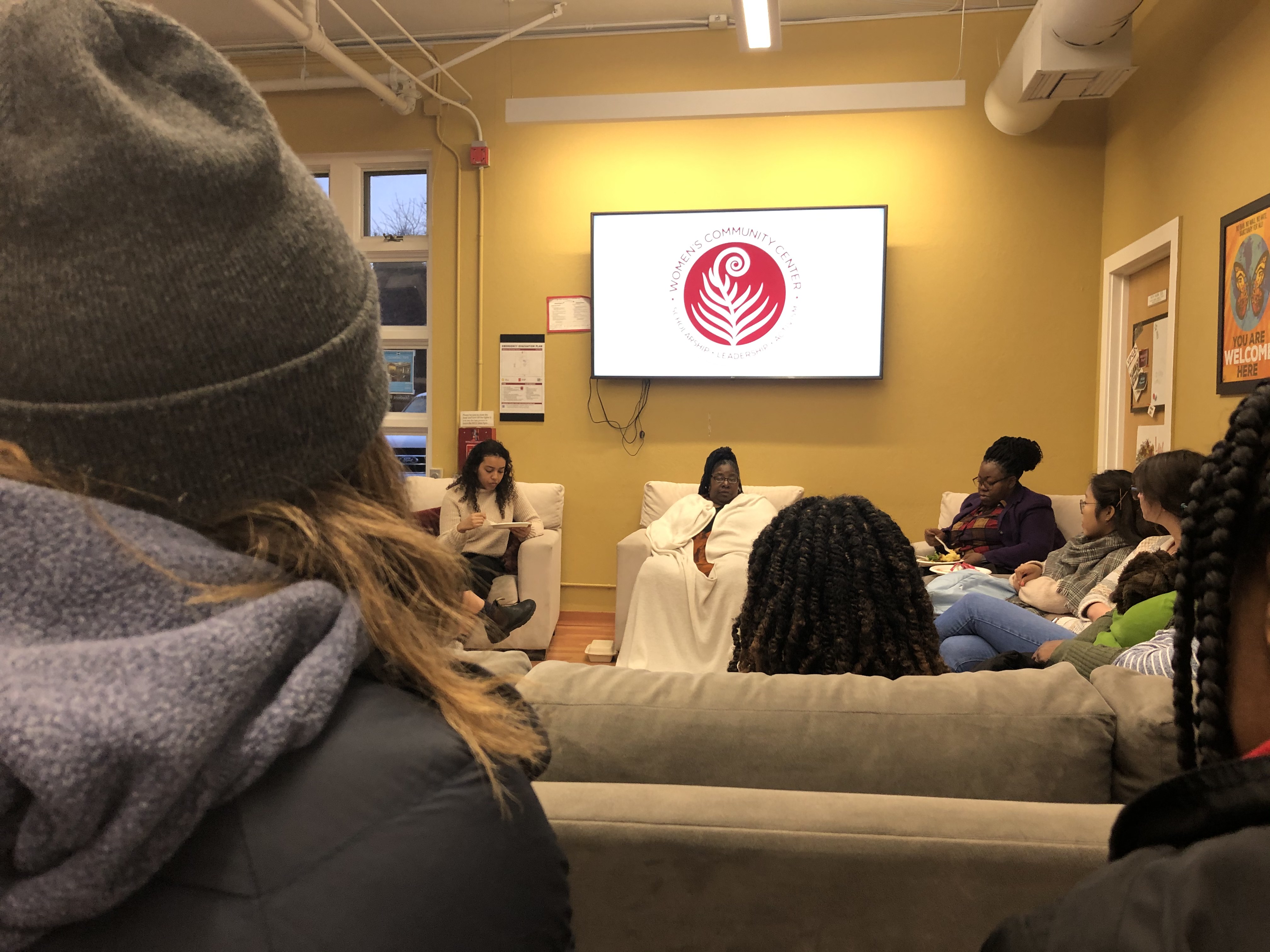Students and faculty gathered in the Women’s Community Center on Thursday for a dinner and discussion with activist Loretta Ross on reproductive justice. In the 90-minute talk, Ross addressed the origins of the term “reproductive justice,” using a human rights framework to center the movement and its applicability to current and future reproductive health and social justice issues.
Ross is a visiting Women’s Studies associate professor who started her career in activism and social change in the 1970s at the National Football League (NFL) Players Association. Since then, she has worked with high-profile reproductive justice groups, including the D.C. Rape Crisis Center, the National Organization for Women (NOW), the National Black Women’s Health Project, the Center for Democratic Renewal (National Anti-Klan Network), the National Center for Human Rights Education and SisterSong Women of Color Reproductive Justice Collective. She retired as an organizer in 2012 to teach about activism.
Ross’s advocacy for reproductive rights is rooted in her personal experiences. At 14, she became a victim of rape and incest, and gave birth to a child before completing the tenth grade.
“That was not the way I wanted to become a mother,” Ross told the audience. “But back in 1968, abortion was not legal and there was no way to really terminate the pregnancy.”
Ross had resolved to give her baby up for adoption, but changed her mind when she was handed her son for the first time in the hospital.
“In that moment, I went from pregnant person to a mother,” she said. Though Ross had come to terms with her new role as a mother, her high school administration had not, and they banned her from coming back to school. She and her family sued the San Antonio school district for her right to return, and won the case.
“That was my first feminist act,” Ross reflected. “Even though I couldn’t spell the term ‘feminism’ at the time, I knew that they did not expel the boys who made the girls pregnant, and that this was wrong.”
Since then, Ross has “never sat back and let injustice happen,” instead delving into work with a variety of causes related to reproductive health and social justice.
Her pursuit of what is now termed reproductive justice started at a 1994 conference in Chicago among a group of 12 black women from different activist organizations. At the conference, a representative from the Democratic party encouraged attendees to support a healthcare reform plan that would minimize or omit reproductive healthcare as a strategy for getting Republican opponents on board. Upon hearing this, Ross and her colleagues knew they had to take action.
“We were frustrated that fighting for abortion rights was always isolated from all of the other social justice issues,” Ross said. She explained that for many women, the experience of fearing pregnancy and feeling limited by resources was something that should be counted as a human rights issue. As a result, Ross and her colleagues decided they were going to address reproductive rights under this human rights framework. They meshed together “reproductive rights” and “social justice” to coin the term reproductive justice.
“A lot of people think we created reproductive justice to counter the pro-choice movement,” Ross told the audience. “But we did not. It was designed to talk about the human rights needs of black women in terms of reproductive justice.”
Ross hypothesizes that the term was accepted to encompass the movement because of frustration with the limiting, binary nature of pro-choice versus pro-life. In contrast to this dichotomy, she refers to reproductive justice through a “shifting lense” concept, which can be applied to different communities and people based on their needs and vulnerabilities to oppression.
“When the Latina community started using reproductive justice, they used it to talk about immigration. When it was shifted to the Native American community, they talked about sovereignty,” Ross said. She detailed how the movement is expansive enough that it ultimately ends up permeating so many aspects of society, such as the need for proper education or tax plans that do not discriminate against mothers.
Due to the expansive nature of the movement, however, Ross admitted that it was often hard to fully capture and explain the term to others. As a result, she has worked to break down reproductive justice into three tenants: the right to not have kids, the right to have kids and give birth under desired conditions — which she emphasizes as vital for women of color due to eugenics and population control — and the right to raise children in safe and healthy environments. Ross would later add a fourth tenant: the right to gender identity and sexual autonomy.
The group of twelve women first introduced the term “reproductive justice” to the world at a conference of women of color and allies in 2003. Since then, Ross has seen it gain traction, and expressed hope that the movement would continue to grow.
“We asked the question of whether reproductive justice was a sturdy enough framework for us to organize on, and those 600 women said, Hell yes,” Ross said with a smile.
Contact Sarina Deb at sdeb7 ‘at stanford.edu.
